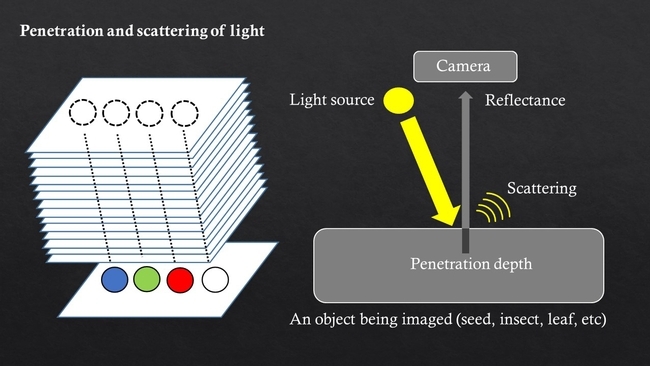- Author: Kathy Keatley Garvey
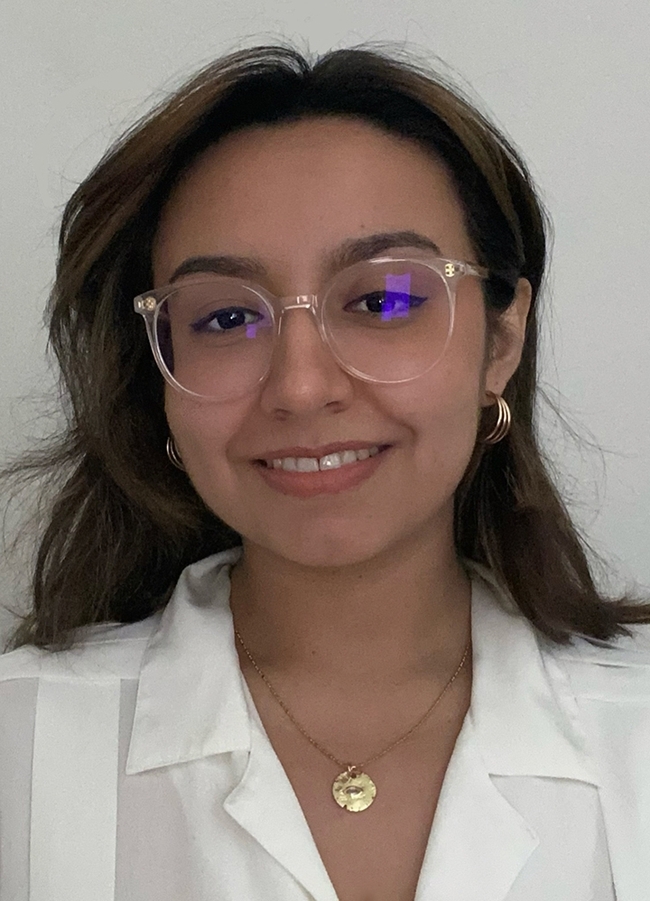
Bita Rostami, who received her bachelor's degree in animal biology (ABI) from the University of California, Davis, in June 2022, saw her practicum thesis published as a review article several months later in the journal, Methods in Ecology and Evolution.
"A key element in the ABI major, hosted by the UC Davis Department of Entomology and Nematology, is the practicum project--an opportunity for students to engage with research labs,” said her mentor, agricultural entomologist Christian Nansen, professor in the department.
The journal published her practicum report, “Application of Active Acoustic Transducers in Monitoring and Assessment of Terrestrial Ecosystem Health—A Review” in its Oct. 14th edition. “She pitched the basic and highly innovative idea of using active acoustic transducers in monitoring and assessments of terrestrial ecosystem health,” Nansen said.
“ABI practicum projects represent a unique opportunity for us instructors and lab team leaders to open our doors to students and allow them to challenge themselves and be inspired,” Nansen said. “And in some cases, it us that receive more from the student than what we offer--Bita is an example of such a student with an enormous academic potential.”
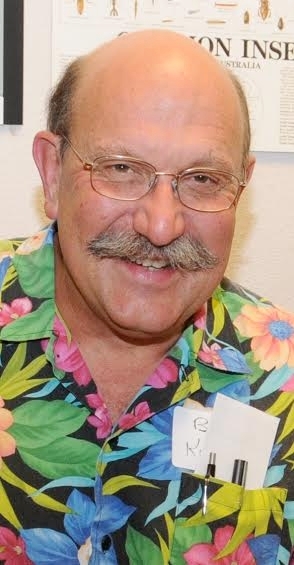
“Setting aside Bita's terrific academic background and qualifications, I have found her to be the ideal collaborator, very cooperative, consistently cheerful, perfectly dependable, stable and delightful to work with," Kimsey said. "Competition may or may not select for exceptional humans, but often selects for difficult characters. Bita almost uniquely combines high productivity and intense curiosity with a delightful personality, an ideal combination to have in a research program.”
In the journal article, Rostami reviewed and discussed possible applications—and also constraints—of active acoustic transducers in monitoring and assessment of terrestrial ecosystem health.

How did Bita Rostami conceive the idea of using acoustic transducers in monitoring and assessing terrestrial ecosystem health?
“I learned in one of my classes that playing recordings of healthy oceans could aid in restoring marine communities,” Rostami said. “From there, I wanted to find out if sound could be used similarly to help restore terrestrial ecosystems. Through my initial research, I found that although sound and sound recordings have been used to monitor and rehabilitate wildlife in terrestrial ecosystems, more research needs to be done on applying sound in assessing terrestrial plant health. I was familiar with multiple types of acoustic transducers commonly used in precision agriculture and urban forestry, so I wanted to see if we could apply pre-existing technology to perform monitoring and assessments on a broader scale in rough terrestrial terrains.”
One thing I really like about the ABI program at Davis is the wide range of research opportunities it offers students,” Rostami said. “You gain access to over 100 labs across campus and can choose to research anything from veterinary medicine to wildlife conservation. I wasn't interested in taking the pre-vet route when I applied to the program, but I could still choose classes that fit my interests and helped me design and execute my practicum.”
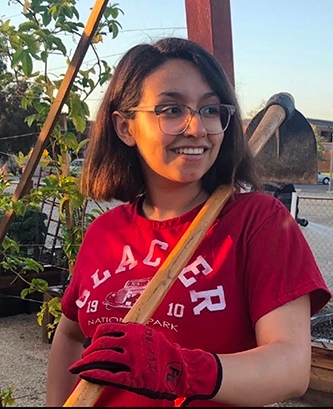
“That convinced me that this is what I want to do for the rest of my life,” she said. She then gained experience as an undergraduate research assistant with the UC Irvine School of Biological Sciences. Her work, with principal investigator Peter Bryant from January to May of 2020, involved researching and analyzing the diversity and life cycle of Pacific Ocean zooplanktons.
Next project: for several months in early 2021, she served as a researcher, advised by paleoecologist Renske Kirchholtes of UC Santa Cruz, in the California Ecology and Conservation (CEC), part of the University of California's Natural Reserve System (CNRS). “CEC is an undergrad field program that takes students from different UCs across multiple UC nature reserves to learn about Californian ecology and do research,” she explained.
Experience as a research assistant in the UC Davis laboratory of conservation ecologist Susan Harrison in the Donald and Sylvia McLaughlin Natural Reserve, a 7,050-acre CNRS reserve in Napa and Lake counties followed. Working with primary investigator Rebecca Nelson from March 2021 to February 2022, she conducted daily visual encounter surveys of field sites or pollinator species, maintained daily data entry (time/date, weather, GPS coordinates, pollinator species, number of visitations and lower species visited), and collected soil samples from study sites to measure chemical makeup. She also collected seeds from specific flower species to analyze genetic diversity and test for seed viability.
Rostami, now 23 and a resident of Newport Beach, is taking an academic break before applying for graduate school. She is working full-time teaching math and biology as a private academic tutor in grades K-12. “I plan to eventually apply for an environmental science master's program and get certified through the Society of American Foresters.”
Rostami, who speaks Farsi (Persian), English and Spanish, already has accomplished two “firsts” in her family: She is the first to attend college in the United States “since we immigrated here from Iran around ten years ago. Most of my family are engineers, so I'm also the first one going into environmental studies.”
Well done!
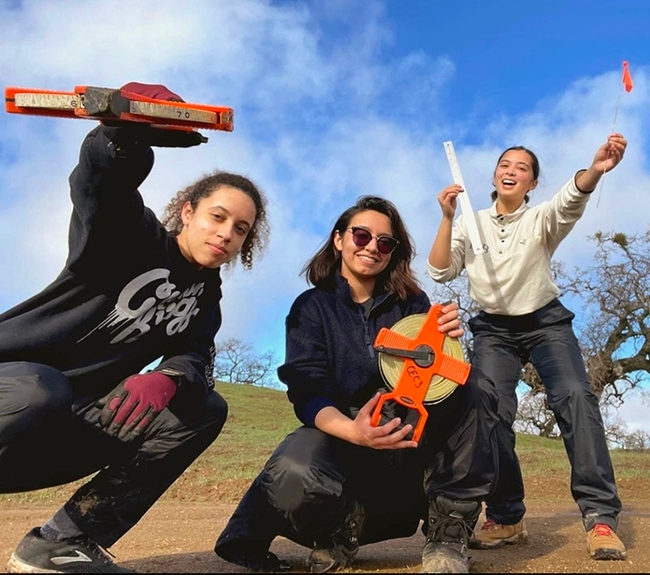
- Author: Kathy Keatley Garvey

It's not enough for entomologists to do research; they must also embrace and integrate technology, says agricultural entomologist Christian Nansen, an associate professor in the UC Davis Department of Entomology and Nematology, who keynoted a virtual meeting of the 47th Congress of the Colombian Entomology Society, themed "Frontiers in Entomology."
Technology plays a crucial role in the development of insect science--and entomologists, their students and society must embrace it, said Nansen. He delivered his keynote address in three parts: Parts 1-3 and Final Thoughts. They are now available on his website (http://chrnansen.wix.com/nansen2) as YouTube videos.
"I argue that, in the near future, we as university professors may have to look beyond publication of results in a research article--that students and society will likely demand more from us," Nansen said. "We can embrace and integrate technologies into what we do to create educational platforms, which include exposure to technologies and therefore enable students to acquire highly 'marketable' career skill sets. We can integrate discussions about entrepreneurship into our research and education--demonstrate to funding bodies, colleagues, and students that we take development and adoption of science-driven solutions seriously."
In his three-part lecture, Nansen provides examples of his research and approaches to university education.
"The lecture," he explains, "describes three elements in my program: optical sensing to diagnose insects, smartphone app development, and use of insect mass-rearing to biodegrade waste streams. Applied research, technology, innovation, and entrepreneurship are the denominators tying these three elements together."
In addition to insect ecology and remote sensing, Nansen's research interests include integrated pest management, host plant stress detection, host selection by arthropods, pesticide performance, and use of reflectance-based imaging in a wide range of research applications.
The three-part lecture:
- Introduction
- Part One: Optical or Remote Sensing
- Part Two: Smartphone App Development and Pesticide Sprays
- Part Three: Breeding of Insects to Bioconverte Waste
- Final Thoughts
Born and educated in Denmark, Nansen received his master's degree in biology from the University of Copenhagen in 1995 and his doctorate in zoology from the Royal Veterinary and Agricultural University in Denmark in 2000. He accepted positions in Portugal, Benin, United States, UK and Australia before joining the UC Davis Department of Entomology and Nematology in 2015 as an assistant professor. His international experience also includes being an international exchange student at the University of Lisbon, Portugal and a visiting professor at Northwest A&F University, Yangling, China.
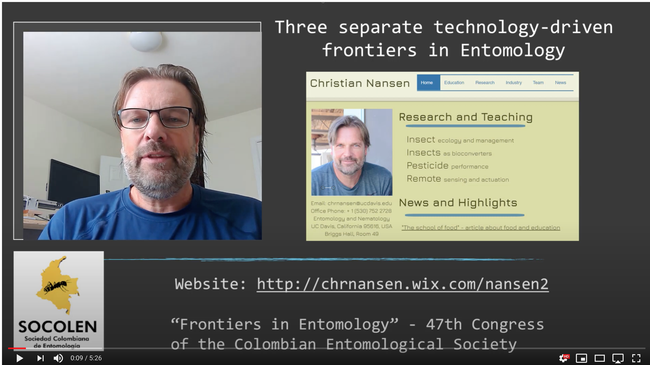
- Author: Kathy Keatley Garvey
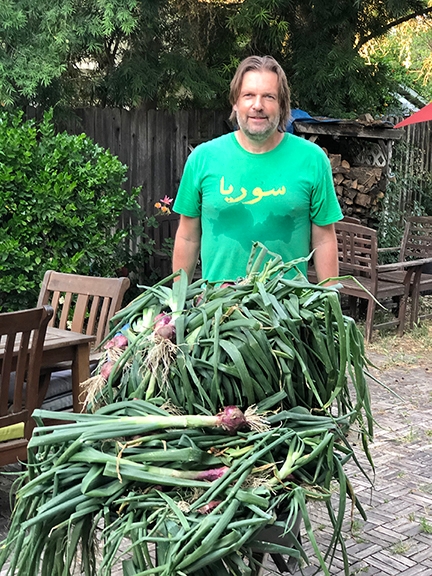
Food ought to be incorporated as an integral part of our school curricula, says UC Davis agricultural entomologist Christian Nansen, an associate professor in the Department of Entomology and Nematology.
Yes!
And he welcomes teachers' involvement in this important project. (Teachers, be sure to contact him! More at the end of this blog.)
Nansen, in a newly published article on “The School of Food” in Futurum, advocates that all school curricula be “rooted in a single dominator: food.”
Biology, ecology and environmental science should be “taught based on subjects related to the growth of plants and animals,” Nansen writes. Literature, history, sociology and humanities should focus on “the importance of food concepts, like ‘breaking bread,' feasts and banquets.”
“What I am proposing here is already being done, in part, as individual initiatives and projects,” he writes. “For example, many schools have a butterfly garden, biology labs keep colonies of insects, students grow some vegetables and have a few livestock animals. In some schools, students learn how to eat and cook healthy food.”
Futurum is a website geared toward students and teachers to become inspired and interested in science. It focuses on research, analysis and insights.
Nansen, whose research interests include insect ecology, integrated pest management, and remote sensing, says that such a focus on food “would strengthen, not weaken, the academic rigor that could be delivered to students of all age groups.”
“That is, ‘food' as an educational denominator can be taught and approached with multiple goals in mind, and these would be similar to the current distinctions between practical and more theoretical classes. By engaging with students through the prism of food, we can make math, physics, history, biology, literature--all these topics more relevant to students and make the teaching more interactive and challenge-based.”
Nansen acknowledges that it is crucial that schools teach students about traditional subjects and provide them with essential skill sets regarding problem solving, critical thinking and basic knowledge, but that that students “can all be taught very effectively through an underlying emphasis on food.”
For example, he mentions that students of all ages can grow crop plants in small pots inside a classroom or outside (small plots and roof gardens), “and study growth as a function of time and growing conditions.” More advanced practical tasks could include developing irrigation systems, and plant and animal breeding programs.
Another example: for engineering, computer sciences and food production, students could delve into solar panels, rainwater catchment systems and water recycling methods. At the more advanced level, they could integrate robotics and machine learning system.
Nansen, linking chemistry with cooking, comments: “Cooking is nothing more and nothing less than applied chemistry. How does the pickling of vegetables work? What is happening when cream is whipped? What happens to food during heating and/or frying? Salting olives, fish and other types of meat has been practiced for thousands of years—how does this means of preserving food actually work?”
In his article, Nansen also explains how food can be incorporated in such subjects as humanities, human history, social studies and math.
Eating has changed over time, the professor acknowledges, “and it varies among countries and cultures, meaning that not all students view food in the same way.” But teachers can capitalize on diversity in the classroom, he relates. They can also address “societal challenges, such as obesity” and elevate levels of empowerment related to stresses, such as fear.
In the article, Nansen shared a project he assigned to his 11-year daughter, Molly, during the sheltering-in requirements: “How much cabbage would be needed to meet the Vitamin K requirements for her entire class for a whole year?”
In addition to learning about the metric system, using Excel spread sheets, regression analyses and calculus, Molly investigated websites and came to several conclusions:
- A person can harvest about 3 kg per m2 (kilograms per square meter)
- A student her age has to have 105 grams of cabbage to meet daily vitamin K requirements
In addition, she created a cabbage-muffin recipe and calculated she would need to eat four muffins per day to meet the daily Vitamin K requirements. She also calculated she would need 2,291 m2 to grow enough cabbage to meet the daily vitamin K requirement for her entire school. It is age-dependent, so that was a bit tricky to figure out.
And lastly, using Google Earth, Molly suggested where to place the cabbage field next to her school. (Her entire project, including the recipe she created, is online as a sidebar.)
Virtual Youth Summit on Food and Education 2021
Nansen said he seeks contact with teachers and headmasters "interested in pursuing this approach at some level at their school."
"The idea is now to take this several steps further, through collaboration with teachers and their students, and set up a web-based platform to host an annual virtual youth summit on food and education!" he said. "That is, groups of students, in collaboration with their teachers and as part of course curricula, produce a 3-5 minute video describing a particular project they have executed. These videos would then be shown at the virtual youth summit, and we will organize review panels of students, teachers, and scientists to comment on the videos. These video projects would be divided into age groups and topics – still to be determined."
"I am hoping that we will be able to create a very special category of video projects describing two schools (have to be on separate continents) doing a project together," Nansen said. "As a start, we are pursuing the potential of a school in California working with a school in Uganda… which would be awesome!"
"We may be able to obtain corporate sponsorships and therefore be able to offer prizes/awards to participating schools, teachers and student groups. With corporate sponsorships, we may also be able to offer logistical support to schools – computers, software licenses (to create videos), basic lab supplies and equipment to conduct experiments.'"
"Just imagine a school being able to put on its website that a group of students competed in the Virtual Youth Summit on Food and Education 2021 and was selected as one of the winners! Students can put this experience on their resume when they later apply to university or jobs. Teachers can include this in their evaluation dossiers."
"Initially, we need to identify teachers interested in joining this effort--ideally teachers from multiple countries," Nansen related. "Once we have 5-10 teachers committed, then we can start putting together the virtual platform and invite schools and teachers more broadly." School teachers and others potentially interested in getting involved can contact him at chrnansen@ucdavis.edu.
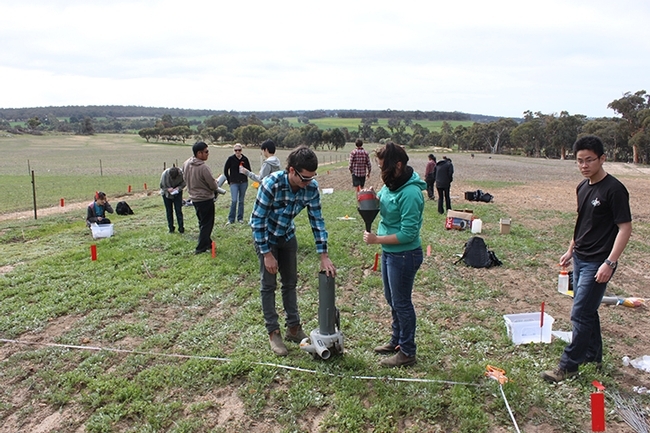
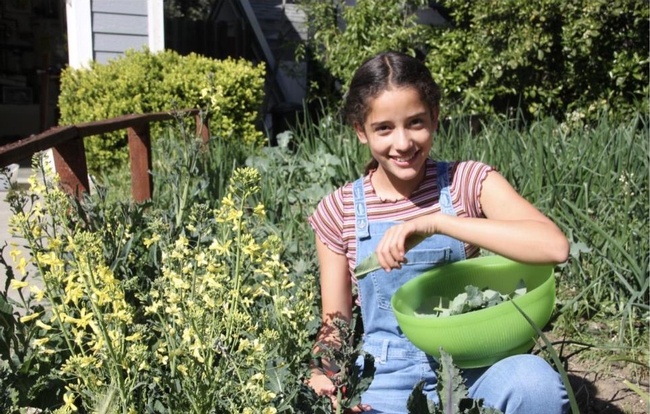
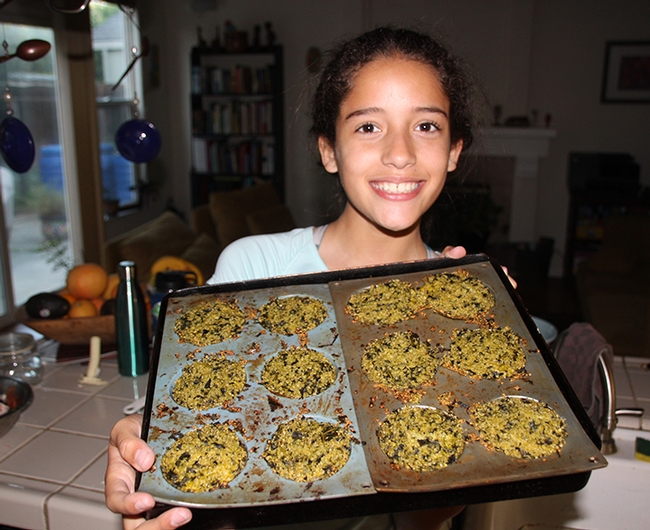
- Author: Kathy Keatley Garvey
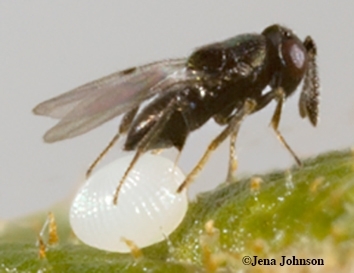
But newly published research by UC Davis agricultural entomologist Christian Nansen and insect physiologist Michael Strand of the University of Georgia reveals a new, non-destructive and quite accurate method to characterize physiological responses to parasitism: proximal remote sensing or body reflectance response data.
They published their research, “Proximal Remote Sensing to Non-Destructive Detect and Diagnose Physiological Response by Host Insect Larvae to Parasitism,” Dec. 4 in the journal Frontiers in Physiology.
Nansen, first author of the paper and an associate professor in the UC Davis Department of Entomology and Nematology, specializes in insect ecology, integrated pest management and remote sensing. Strand, a professor of entomology at the University of Georgia, is an international authority on the physiology of insect parasitism.
The scientists studied two common parasitic wasps or parasitoids, Microplitis demolitor, and Copidosoma floridanum, which lay their eggs in the larval stages of the soybean looper moth, Chrysodeixis includens. The pest, found throughout much of North and South America and elsewhere, feeds on soybeans.

“Based on reflectance data acquired three to five days post-parasitism, all three treatments (control larvae, and those parasitized by either M. demolitor or C. floridanum) could be classified with more than 85 percent accuracy,” they wrote.
Due to parasitism-induced inhibition of growth, “it's easy to differentiate soybean loopers parasitized by M. demolitor from non-parasitized larvae as long as the developmental stage of the host larva is known,” they said. In addition, a single M. demolitoroffspring emerges from the host larva 7-9 days post-parasitism to pupate, while non-parasitized larvae continue to increase in size to the final instar.
Copidosoma floridanum minimally alters host growth until late in the final instar, when thousands of wasp progeny complete their development. This wasp is known for having the largest recorded brood—3,055 individuals--of any parasitoidal insect.
The researchers said that the accuracy rate of more than 85 percent holds promise. “The hyperspectral proximal imaging technologies represent an important frontier in insect physiology, as these technologies can be used non-invasively to characterize physiological response across a range of time scale factors, such as minutes of exposure or acclimation to abiotic factors, circadian rhythms, and seasonal effects. Although this study is based on data from a host-parasitoid system, results may be of broad relevance to insect physiologists.”
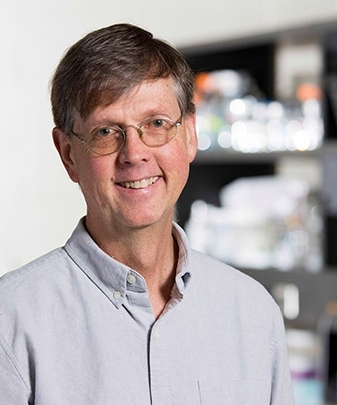
Both of the wasps they studied are idiobionts and endoparasitoids.
Nansen noted that “many species of minute wasps are parasitoids of eggs and larvae of other insects, and parasitism represents one of the most extreme life strategies among animals”
“Living inside the body of another animal,” he said, “poses a series of non-trivial challenges, including how to overcome/suppress the defense response by the host; how to obtain oxygen; how to feed on the host without killing it--because once the host is dead, then microbial organisms and general decomposition will make the host body unsuitable--and how to manage waste.”
Nansen likened the developing parasitoids to astronauts flying in a space capsule. “A developing parasitoid faces a long list of serious practical challenges, so the evolutionary selection pressure has been immense and lead to some of the most extreme cases of co-evolution.”
And those soybean loopers? Those major pests of soybeans? Thanks to this research, we now know more about physiological responses to parasitism--and there's more to come. (We're also admiring the amazing photography of Jena Johnson!)
As the researchers said: "The hyperspectral proximal imaging technologies represent an important frontier in insect physiology."
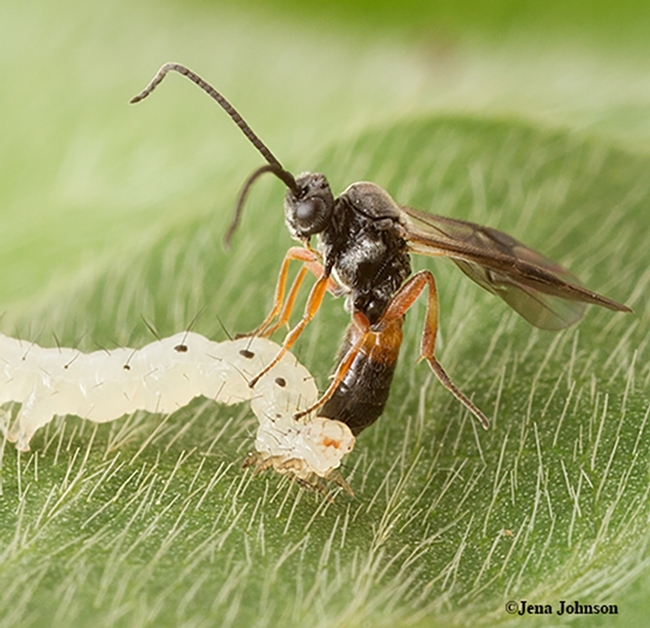
- Author: Kathy Keatley Garvey

If you've been following the innovative work of agricultural entomologist and remote sensing technology researcher Christian Nansen, associate professor of entomology at the University of California, Davis, you can.
Using Skittles (candy), magnolia leaves, mosquito eggs and sheets of paper, Nansen explored how light penetrates and scatters--and found that how you see an object can depend on what is next to it, under it or behind it.
He published his observations in a recent edition of PLOS ONE, the Public Library of Science's peer-reviewed, open-access journal. He researches the discipline of remote sensing technology, which he describes as “crucial to studying insect behavior and physiology, as well as management of agricultural systems.”
Nansen demonstrated that several factors greatly influence the reflectance data acquired from an object. “The reflected energy from an object--how it looks-- is a complex cocktail of energy being scattered off the object's surface in many directions and of energy penetrating into the object before being reflected,” Nansen pointed out. “Because of scattering of light, the appearance--or more accurately the reflectance profile--of an object depends on what is next to it! And because of penetration, the appearance of an object may also be influenced by what is behind it!”
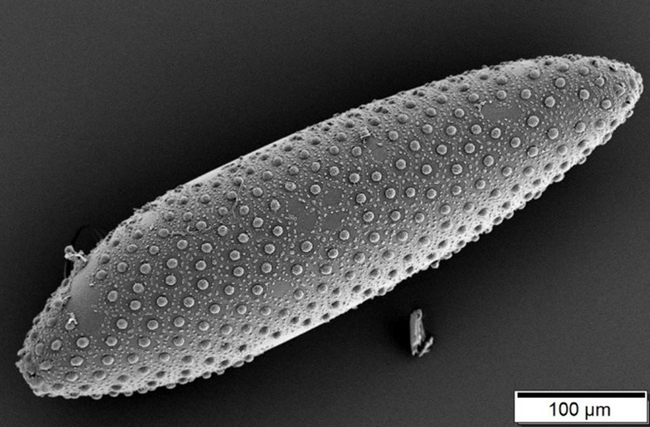
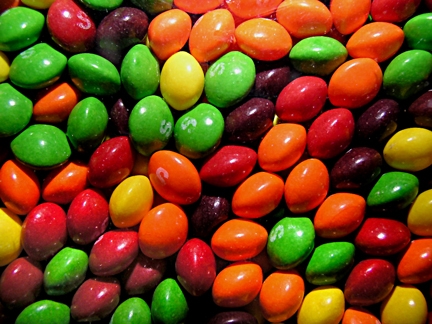
“The findings are of considerable relevance to research into development of remote sensing technologies, machine vision, and/or optical sorting systems as tools to classify/distinguish insects, seeds, plants, pharmaceutical products, and food items.”
In the PLOS ONE article, titled “Penetration and Scattering—Two Optical Phenomena to Consider When Applying Proximal Remote Sensing Technologies to Object Classifications,” Nansen defines proximal remote sensing as “acquisition and classification of reflectance or transmittance signals with an imaging sensor mounted within a short distance (under 1m and typically much less) from target objects.”
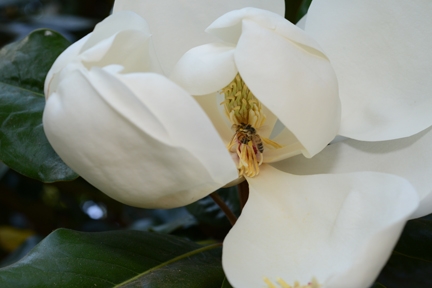
“Even though the objects may look very similar--that is, indistinguishable--to the human eye, there are minute/subtle differences in reflectance in some spectral bands, “ Nansen said, “and these differences can be detected and used to classify objects.”
With this newly published study, Nansen has demonstrated experimentally that imaging conditions need to be carefully controlled and standardized. Otherwise, he said, “penetration and scattering can negatively affect the quality of reflectance data, and therefore, the potential of remote sensing technologies, machine vision, and/or optical sorting systems as tools to classify objects. “
Nansen described the rapidly growing number of studies describing applications of proximal remote sensing as “largely driven by the technology becoming progressively more robust, cost-effective, and also user-friendly.”
“The latter,” he wrote, “means that scientists who come from a wide range of academic backgrounds become involved in applied proximal remote sensing applications without necessarily having the theoretical knowledge to appreciate the complexity and importance of phenomena associated with optical physics; the author of this article falls squarely in that category!”
“Sometimes experimental research unravels limitations and challenges associated with the methods or technologies we use and thought we were so-called experts on,” Nansen commented.
Nansen, who specializes in insect ecology, integrated pest management, and remote sensing, joined the UC Davis faculty in 2014 after holding faculty positions at Texas A&M, Texas Tech and most recently, the University of Western Australia.
